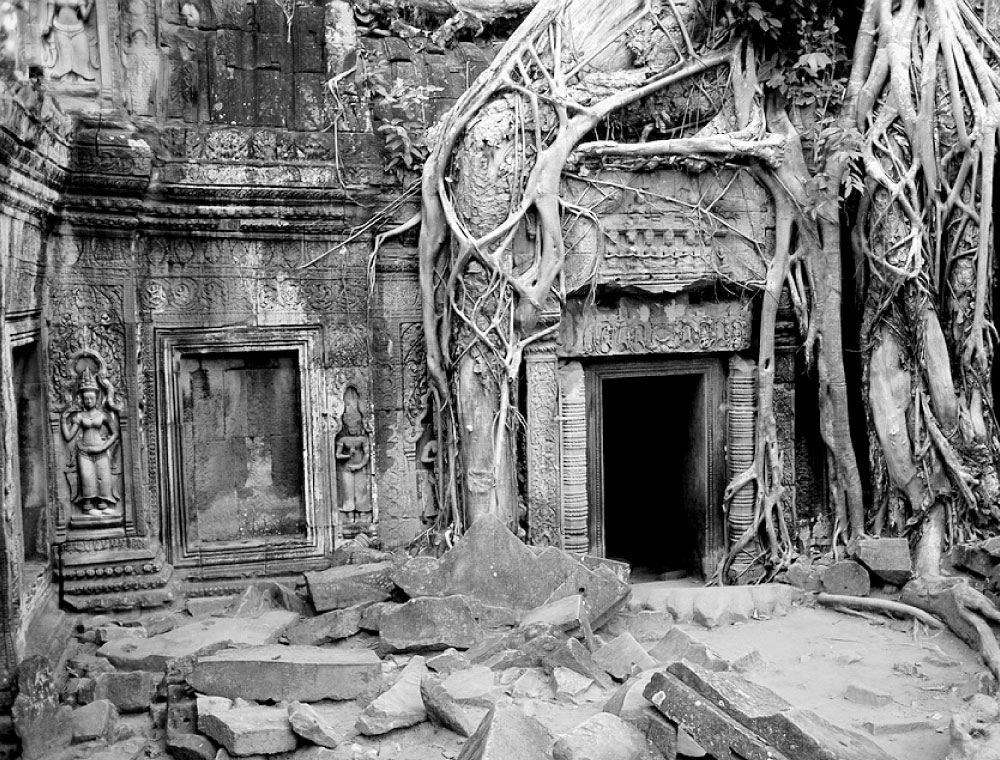Minorities/Hill Tribes of Mondulkiri
Approximately 80 percent of the Mondulkiri's population is made up of ten tribal minorities, with the majority being Phnong. The remaining 20 percent includes Khmer, Chinese and Muslim Cham. The population primarily lives off the land by planting rice, fruit trees and a variety of vegetables. The remaining population grows strawberries, coffee, rubber and cashew nuts. Although more and more houses are built in “Khmer style”, visitors may still find the traditional Phnong houses. Inside the houses, visitors may find big jars (which are said to be more than a thousand years old) and traditional gongs. There are a variety of gongs used for different occasions. Jars and gongs are amongst the most valuable possessions of indigenous communities in terms of tradition, spiritual and material. During the times of Pol Pot, those objects were buried in hidden places in the jungle and some remained hidden until this day.
WATERFALLS
Many majestic waterfalls are found in Mondulkiri including:
BOU SRA WATERFALL
It is located at Pich Chinda District, and 43 kilometres from Senmonorom Town. Bou Sra which has two stages is the largest waterfall, made famous by a popular Khmer song in Mondulkiri.
SEN MONOROM WATERFALL
This easy 5km walk from town waterfall does not offer much. It was originally a nice picnic spot until the Japanese built a hydro electric power station and stole all the water.
ROM NEAR WATERFALL
It is located in Sen Monorum District and 10.5-kilometre from the provincial town. The waterfall is in good location and proximal to the industrial plantations such as rubber, coffee, cashew, mango, and avocado. During the rainy season, the waterfall is five-metre in height and 10-metre in diameter, and during the dry season, the waterfall is six-metre in height and only eight-metre in diameter. At the waterfall, there are many large trees lending cool shades to the area.
KBAL PREAH WATERFALL (HEAD OF GOD)
As a beautiful hidden waterfall in the green forest, Kbal Preah waterfall can be reached by trekking around 2 hours through the forest or completing a combined cycling and elephant trekking trip. Along the forest tracks, sounds of many different types of birds and wild animals may be heard. An ethnic minority village named, “Bunong Village” may be found on the way to the falls. It is a good place for picnicking, resting and bathing.
ELEPHANT TREKKING FROM PAHLUNG VILLAGE
Pahlung Village is 8km north of Sen Monorom. It is possible to elephant trek at this small village. Please be advised to visit a day early (possibly on the way to Bou Sra Waterfall) and arrange the elephant trek as the animal must be rested for the next morning rather than working in the jungle.
PHNOM DOS KROMOM (MAIDEN BREAST HILLS)
Phnom Doh Kromom (Maiden Breast Hills) is a pleasant place for a nice view of Mondulkiri Town and for sunset watching. As many consider this hill as a powerful sacred place, a small shrine dedicated to the spirit located at the summit has been constructed. The shrine grants minority groups an area to hold religious ceremonies, and to provide offerings and sacrifices in forms of food, beverage and animals.
MARKET LIFE OF HILL TRIBE PEOPLE
Mornings are the best time of the day to see the town market and stroll about. This is ideal as many people from the various hill-tribe communities gather at the market to sell their wares and purchase supplies. It is a perfect environment to observe the locals’ attire and, with their permission, possibly get snapshots of them going about their normal business at the market.
